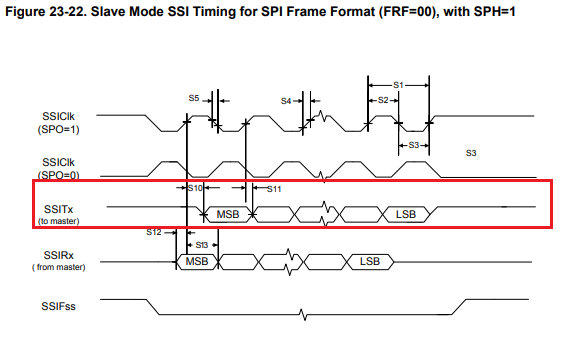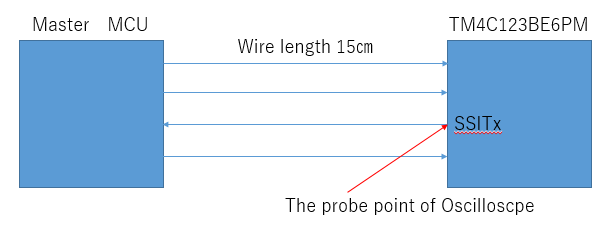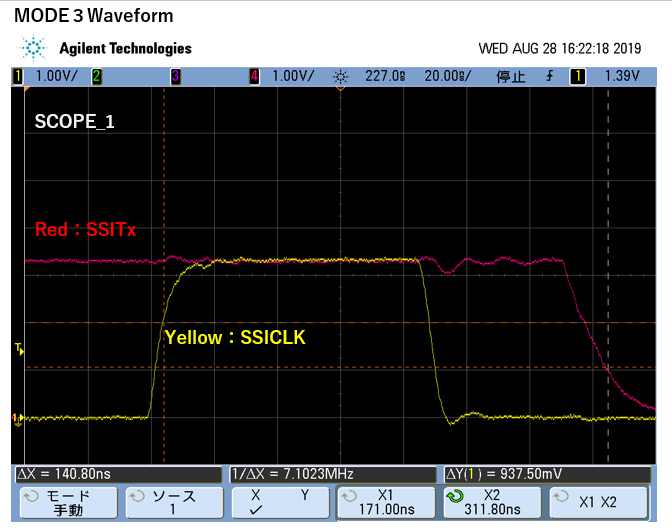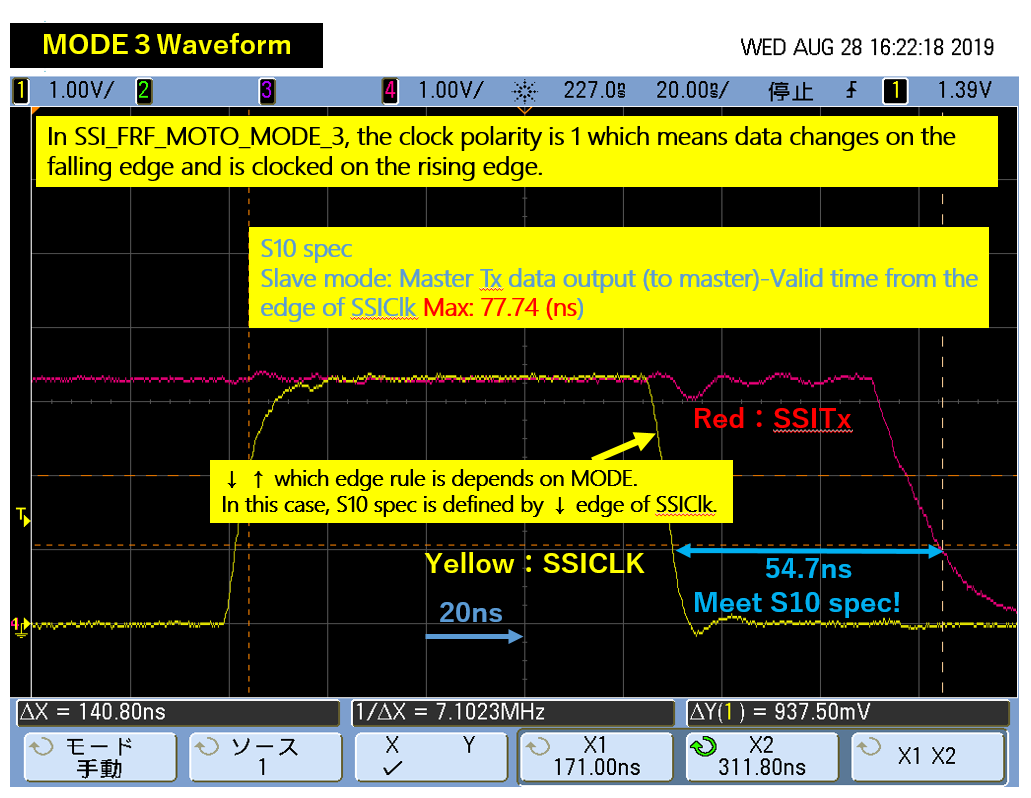Hello, we are debugging TM4C123BE6 SSI Slave program.
We choose SSI Slave Mode3(SPO=1,SPH=1). But SSITx waveform is different from the Datasheet's description (Figure23-22).
S10 and S11 Values are as follows;
We use the following SSIConfigSetExpClk function.
SSIConfigSetExpClk(SSI0_BASE, SysCtlClockGet(), SSI_FRF_MOTO_MODE_3, SSI_MODE_SLAVE, 6666666, 8);
We want to use SSITx to meet MODE3 (Figure23-22) spec.
If there are any extra S/W settings in order to meet MODE3 spec ,please let me know.
Best regards,
ay0689_3






